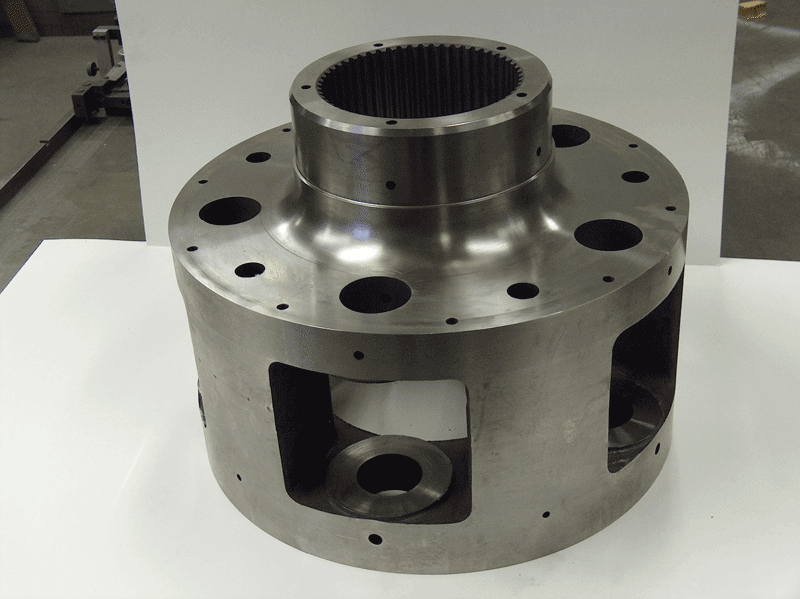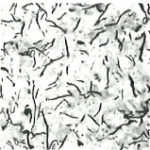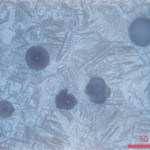What is Ductile Iron?
Ductile Iron is a type of cast iron known for its impact and fatigue resistance, elongation, and wear resistance due to the spherical (round) graphite structures in the metal. Ductile Iron is also called ductile cast iron, spheroidal graphite cast iron, or nodular cast iron.
An Innovation In an Important Industry
The innovations in industry during the end of the 1800s and the early 1900s had brought important changes to the way we built everything from buildings to ships to vehicles. The roaring Twenties and World War I had pushed the envelope even further. In the foundry industry, innovations were sought to make iron and steel better and cheaper to produce. In the modern era, metal was king, and more of it was used in the construction of more things than ever before in history. By the beginning of World War II, the demand for items made from metals such as iron was higher and more pressing than ever. Maintaining the war effort depended on continuous production and better quality. Materials that had been used in the past such as chromium were getting more scarce and alternatives had to be found.
Keith Millis was a metallurgical engineer and an important innovator in the foundry industry during the middle of the 20th century. He is credited with creating ductile iron in 1943 while attempting to find alternatives for strengthening iron during World War II. He and his collaborators Albert Gagnebin and Norman Pilling received US patent 2,485,760 and US Patent 2,485,761 for making ductile iron using magnesium (Mg) in the metallurgy (the metal composition or what was in the secret recipe) to get the graphite to line up into spheres. This was an important innovation that helped to revolutionize iron production.
Improving The Process
Millis was not the first to strengthen normal cast iron. We still cast Meehanite® castings today. Augustus Meehan patented the Meehanite process back in January of 1931. Meehan used calcium silicide to also produce similar nodules to what is in ductile iron.
Ductile iron has become one of the most popular types of iron casting. Development of ductile iron continued into the 1950s, led by Millis, Gagnebin, and many others. They proceeded to improve the process of ductile iron casting over the next few decades. This promoted a better acceptance of the process throughout the industry. Ductile iron production increased nine-fold in use during the 1960s as an engineered material for commercial applications.
What makes Ductile Iron…“Ductile”?
- Gray Iron
- Ductile Iron
Both ductile iron and cast iron have graphite within. If you look closely (with a high-power microscope with 100x magnification or more) at regular cast iron (gray iron), you will see the graphite bits look like squiggly lines called “flakes.” When you look at the graphite in ductile cast iron, however, they look like little spheres or nodules (thus the spheroidal graphite iron and nodular iron names). This formation in the ductile iron allows it to be more pliable and able to withstand stress without cracking or breaking.
How Ductile Iron Is Made
During the smelting process, carbon is added to a molten cast iron bath. More carbon than the iron would normally be able to absorb into the structure is added. Explaining the iron-carbon relationship in another way, it is like adding so much salt to your water that you reach a point no more salt will dissolve. This is what makes ductile iron different than steel. Steel only has as much carbon as the iron can absorb. In addition to the carbon, various other elements are added to create the desired solution. Silicon, Sulphur, manganese, and oxygen all do their part in the mix to help the carbon to form into spherical graphite structures as the iron cools.
The most important element to the process, however, is Magnesium, which assists in the production of spherical graphite nodules instead of flakes. According to Millis, this was a surprising interaction. In addition to effectively promoting this process, it is also very effective in lowering the sulfur content of the iron. Reducing the sulfur content is important since sulfur makes iron and steel more brittle.
This, admittedly, is an oversimplification of the process (after all, we are not training you for a metallurgical degree, though if you want one, we like the Engineering Degrees found in Wisconsin, don’t mind our geographic bias).
What is in Ductile Iron?
As stated above, there are a variety of elements that are found in ductile iron. Metallurgists study the effects of different proportions of these elements to determine their effect on the qualities of the iron they produce. Each foundry has slightly different combinations that they provide. For instance, to improve the strength of ductile iron, additional tin or copper can be added. Additionally, if you wish to improve corrosion resistance in iron, then copper, nickel, and/or chromium can replace anywhere from 15-30% of the iron.
There are a few mainstays, however. If you were to do a chemical analysis of ductile iron, this is what you would normally find:
Iron ~94%
Carbon 3.2 – 3.60%
Silicon 2.2 – 2.8%
Manganese 0.1 – 0.2%
Magnesium 0.03 – 0.04%
Phosphorus 0.005 – 0.04%
Sulfur 0.005 – 0.02%
Copper <= 0.40%
What are the Benefits of Ductile Iron?
Ductile iron castings are very strong compared to regular cast iron (gray iron). The tensile strength of cast iron is 20,000 – 60,000 psi while ductile iron starts at 60,000 psi and can go to 120,000 psi. The yield strength for ductile iron is generally 40,000 – 90,000 psi but the yield strength of cast iron is so low it is considered not measurable.
Let us put strength in a different way. We have seen gray iron parts break when they hit the ground after falling ten feet. With a ductile iron casting, you can hit the part all day long with an eight-pound sledgehammer and it is not likely to crack.
What causes the problem for gray iron is graphite flakes which encourage fractures along the flakes, while the nodules in ductile iron prevent it from fracturing along those lines. Given the exact same scenario of the same part made from the two different metals, the brittle gray iron is more likely to crack, while the ductile iron is more likely to bend.
Ductile iron also has what is called excellent wear resistance because of the graphite in the iron. When you have something rubbing against ductile iron, the ductile iron wears away much slower than many other metals. The wear resistance is partly from the graphite structures that can act similarly to dry lubricant on the iron.
Ductile iron dissipates heat very well and can be machined fairly easily, though ductile iron is harder to work with than regular gray cast iron. Ductile cast iron dampens vibration and sound much better than steel would make ductile iron a good match for use on large machines.
What is Ductile Iron Used For? (Applications)
Ductile iron is great for use where you need strong metal with wear resistance. Here is a sample list of things made from or contain ductile iron:
- Pipe and pipe fittings (almost 50% of ductile iron sold in the US is for pipe and fittings)
- Axles
- Connecting rods (like in engines)
- Crankshafts
- Cylinders
- Disc brake calipers
- Gears and Gear Boxes
- Housings and manifolds
- Hydrostatic Barrels
- Idler arms
- Large Machines
- Machine Tooling
- Military uses
- Piano Harps (the part that holds the strings of a piano)
- Spindle supports
- Steering knuckles
- Suspension system parts
- Truck axles
- Valves (especially high-pressure valves)
- Wheel hubs
- Yokes for power transmission
Choose Willman for Quality and Dependability!
Willman Industries has open capacity for new projects for both large and small castings. We produce most of the commonly used grades of gray iron and ductile iron. So send us the drawings and specifications of your latest project today and we will provide timely feedback and/or quotations. If you are experiencing a crisis with your current supply chain, call us. We have the management horsepower to quickly step into the breach.




